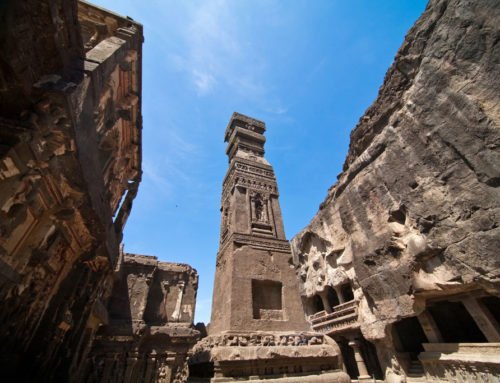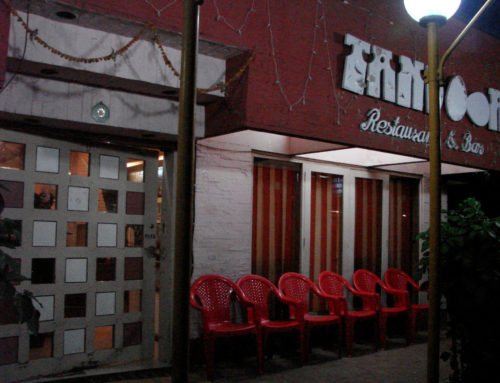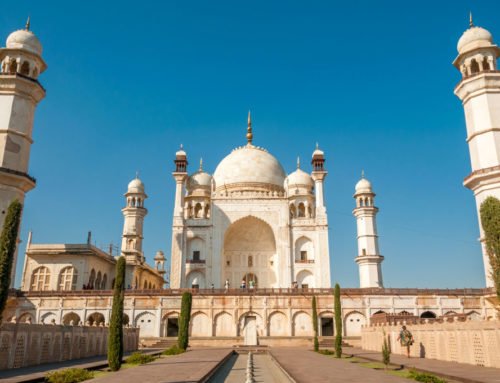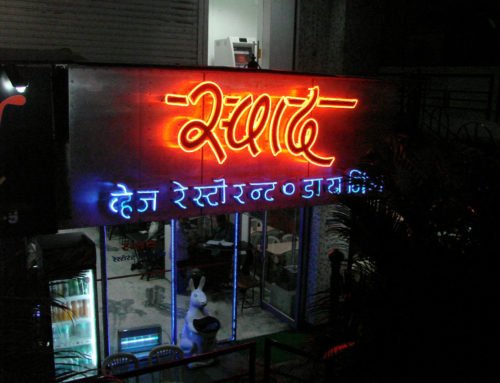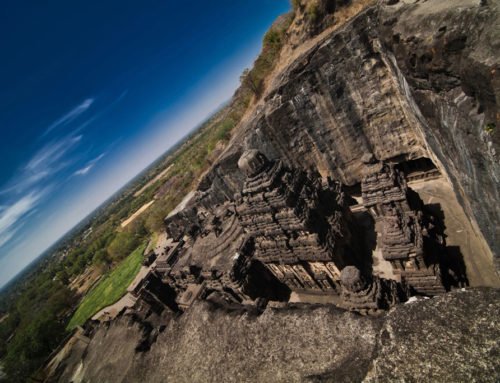Overview
- Features: Fort with cannons, minaret, royal palace and dark tunnels
- Opening Times: 6am to 6pm, daily
- Best Time to Visit: Late October to early March
- Duration: 2 to 3 hours
- Travelled By: Bus
- Cost: Indian/foreigner Rs 10/200
- Address: Daulatabad, Maharashtra, India
- Type: Fort
Author Reviews[display_rating_item_results rating_form_id=”2″ rating_entry_ids=”1″ show_category_filter=”false” show_options=”true” result_type=”star_rating” preserve_max_rating=”true” show_title=”false” show_count=”false” ]
Total Rating: [display_rating_result rating_form_id=”2″ show_count=”false” show_rich_snippets=true] [accordions load=”1″] [accordion title=”User Reviews” last] [display_rating_item_results rating_form_id=”5″ show_options=”true” result_type=”star_rating” preserve_max_rating=”true” show_title=”false” show_count=”true” show_rich_snippets=true] [/accordion] [accordion title=”Add Review”][display_rating_form show_email_input=”true” show_comment_textarea=”true” show_name_input=”true” rating_form_id=”5″] [/accordion] [/accordions]
Summary
Located 13 km from Aurangabad, Daulatabad Fort is an attraction straight out of a Tolkien fantasy. Perched on a granite outcrop of the Deccan Plateau, this formidable fort has witnessed some of the greatest carnage in the region. Part of the ascent goes through a pitchblack, bat-infested, water-seeping, spiralling tunnel. It’s a fascinating place to explore!
Daulatabad Fort
Perched on a volcanic lava rock on the Deccan Plateau 13 km from Aurangabad, the formidable Daulatabad Fort has witnessed some of the greatest carnage in the region. Built by the Yadava King, Bhillama V in the 12th century A.D., Daulatabad Fort was originally known as Devgiri (“Hill of the Gods”). It was captured in 1296 by Allaudin Khilji, the Deccan’s first Muslim invader from Delhi; it remained as a principle stronghold for many years. He was followed by Muhammad bin Tughluq, who annexed the fort in 1328 and renamed the town Daulatabad (“City of Fortune”). In a fit of misguided reasoning, he decided to shift his capital here, and compelled Delhi’s entire population to march across 1,127 km (700 miles); thousands died of starvation or disease along the way. Ironically, Daulatabad – despite being better positioned strategically than Delhi – soon proved untenable as a capital due to an acute water crisis, and Tughlaq forced the weary inhabitants all the way back to Delhi, which had by then been reduced to a ghost town. Daulatabad was successively conquered by the Deccani Bahmani sultan, the Nizam Shahis, the Mughals, the Marathas and finally the Nizam of Hyderabad – each conquest proving more bloody and savage than the last.
Built on a 200-metre high conical hill, Daulatabad Fort was one of the most powerful forts of the medieval Deccan. The pyramid-shaped hill, on which the imposing Daulatabad Fort is built, stands apart from the surrounding ranges, and towers to a height of 183 m (600 ft). This made Mughal emperor, Shah Jahan chronicler note that “neither ant nor snake could scale it”.
[singlepic id=1894 w=720 h=560 float=center]
The defence system that made Daulatabad Fort virtually impregnable consists of moats and three encircling fortification walls with lofty gates and bastions at regular intervals. The fort was enlarged and structures were added subsequently as the fort passed on from one hand to another and from one dynasty to another. Today, the Daulatabad Fort, besides the moats and fortification walls consists of the Stepped Wells (baolis), Kacheri (court) building, Bharat Mata temple (temple dedicated to Mother India), Hathi Haud (Elephant tank), Chand Minar, Aam Khas building (Hall of Public Audience), Royal Hammam, Chini Mahal, Rang Mahal, Andheri (the Dark Passage), building known as Baradari and water cisterns. In addition, there are ingeniously built mazes with a complex arrangement of entryways and deep rock-cut moats and trenches which can be crossed only at one point, over a drawbridge. The defence mechanism of a rock-cut subterranean passage is unbelievable.
The vestiges unearthed from time to time in the fort complex revealed the existence of a multi-cultural religious at Daulatabad. These consists of various sculptures of gods and goddesses of Brahmanical pantheon, the Jaina thirthankaras, architectural members of secular and non-secular character, cannons, utensils of copper, etc. In the recent past, the archaeological excavations carried out within the fort complex had laid bare the lower city complex consisting of main lanes and by-lanes bordered by remnants of various structures of different dimensions.
Four solid concentric walls protect the fort. The first of its three zones is Ambarkot, the outer fort.
[singlepic id=1904 w=720 h=560 float=center]
[singlepic id=1899 w=720 h=560 float=center]
A large number of cannons are found at Daulatabad Fort, some in the original places like bastions on fort walls and circular towers, while others were collected from various locations and displayed in the courtyard near the entrance gate and near Aam Khas gate. The cannons range from large to heavy guns to medium howitzers and handguns. These cannons are made of either bronze or iron – both wrought and cast.
The cannons displayed near the entrance gate of the fort represent many varieties of guns. The iron cannon placed in the left cell is 1.82 metres long with a bore of 7 cm in diameter. A bronze cannon placed near the second entry gate is 3.15 metres in length and has a 12 cm diameter bore. This is one of the most ornate cannons depicted with leaf design on its muzzle, a rope design covering the rings and cascabel portion portraying a tiger holding a hunted deer in its mouth. Besides bronze cannons, there are smaller guns and mortars made of iron of varying lengths from 0.9 m to 2.90 m. A gun placed in a cell to the right side of the second gate is notable for decorations of a stylized animal head on its muzzle; it is 3.33 m long with a bore of 6.5 cm.
Other noteworthy cannons of Daulatabad Fort include the Durga tope (Durga cannon), Kala Pahad cannon and the Mendha tope (Ram Cannon) which is the largest piece of artillery in Daulatabad Fort placed near Chini Mahal. Apart from indigenously made cannons, two bronze cannons, which were cast in Amsterdam in 1638 and 1642, are also found here.
[singlepic id=1898 w=720 h=560 float=center]
Within, stands the 60-m (197-ft) high Persian style victory tower, Chand Minar (“Tower of the Moon”), built in 1435 by Alauddin Bahmani to celebrate his conquest of the fort. Its original covering of Persian blue tiles must have made it even more striking. The Chand Minar is closed to visitors.
[singlepic id=1891 w=720 h=560 float=center]
Opposite is the Jama Masjid with 106 pillars taken from Jain and Hindu temples, and a large tank. The 31 m high victory tower built by Ala-ud-din Bahmani in 1318 to celebrate his capture of the fort has at its base 24 chambers and a small mosque.
[singlepic id=1890 w=720 h=560 float=center]
A triple gateway studded with iron spikes provides access into Kataka, the inner fort. Gateways lead through fortified walls into the base of the citadel, known as Balakot, separated by a moat once infested with crocodiles.
[singlepic id=1889 w=720 h=560 float=center]
[singlepic id=1897 w=720 h=560 float=center]
Near the innermost gate lies the blue and white tiled Chini Mahal, where Abdul Hasan Tana Shah, the last Sultan of Golconda was imprisoned by Aurangzeb in 1687 for thirteen years before his death in 1699.
[singlepic id=1900 w=720 h=560 float=center]
On a nearby bastion lies the enormous bronze cannon, the Qila Shikhan or “Fort Breaker”. This 6-m (20-ft) long cannon has a splendid ram’s head, and Persian inscriptions along its length refer to it as the “Creator of Storms”.
[singlepic id=1888 w=720 h=560 float=center]
[singlepic id=1896 w=720 h=560 float=center]
The citadel is reached by climbing 100 more steps and passing through two more gateways. Part of the ascent goes through a pitch black, bat-infested, water-seeping, spiralling tunnel. This devious tunnel which in times of siege was rendered impassable by an ingenious contrivance. This sub-terrain passage is indeed mysterious and in spite of several individual attempts all its mysteries are not known. The long ascending tunnel rises rapidly and tortuously by a flight of step, which are uneven in width and height which are difficult to climb in the absence of light. The labyrinthine passage coupled with the darkness confuse the enemy army to kill themselves along a tunnel containing numerous chambers cut out of solid rock which were used in the olden times as guard rooms and store houses. The turns and twists lead to a window, now covered with grills, but was originally a trap set for enemy intruders who on entering tumble down the slope to meet a watery grave in the moat below. The tunnel was impassable when the great obstacles come in the form of darkness, caltrops, barrier of smoke and a splash of hot oil or water from above. The steps in the courtyard are newly constructed in 1952 for the convenience of tourists.
[singlepic id=1886 w=720 h=560 float=center]
Guides are available near the ticket counter who can show you around for a fee. If you’re lucky you may get the resident guide who takes visitors through the dark tunnels with a flaming torch for a small tip. But on the way down you’ll be left to your own devices, so carry a torch. The crumbling staircases and sheer drops can make things difficult for the elderly, children and those suffering from vertigo or claustrophobia.
[singlepic id=1901 w=720 h=560 float=center]
The dark tunnel leads to the heart of the citadel and end near a pillared pavilion, Baradari, a late Mughal building. The Baradari is said to be the palace of the Yadavi Queen and later Shah Jahan. Of all the palaces here, the Baradari was the favourite summer residence of the Mughal emperors. The fort ramparts offer sweeping views.
[singlepic id=1884 w=720 h=560 float=center]
Getting to & from Daulatabad Fort
[singlepic id=1893 w=720 h=560 float=center]
Getting to Daulatabad Fort is easy and affordable even though it is located 13 km away from Aurangabad. The most affordable way to get here is to take a government bus from the Central Bus Station in Aurangabad town. These red buses leave regularly every hour or so and cost only Rs 28 per person taking about 30 minutes one way. To get back to Aurangabad from the fort, wait at the bus stop in front of the fort. A crowd of locals waiting on the road side should indicate the bus stop.
Other reliable transport methods include taking an auto rickshaw or taxi, however make sure the exact fare is settled upon before hopping in. Of course, the most comfortable way to reach Daulatabad Fort is in a private car with chauffeur which can be organised with a hotel or travel agency in town.



